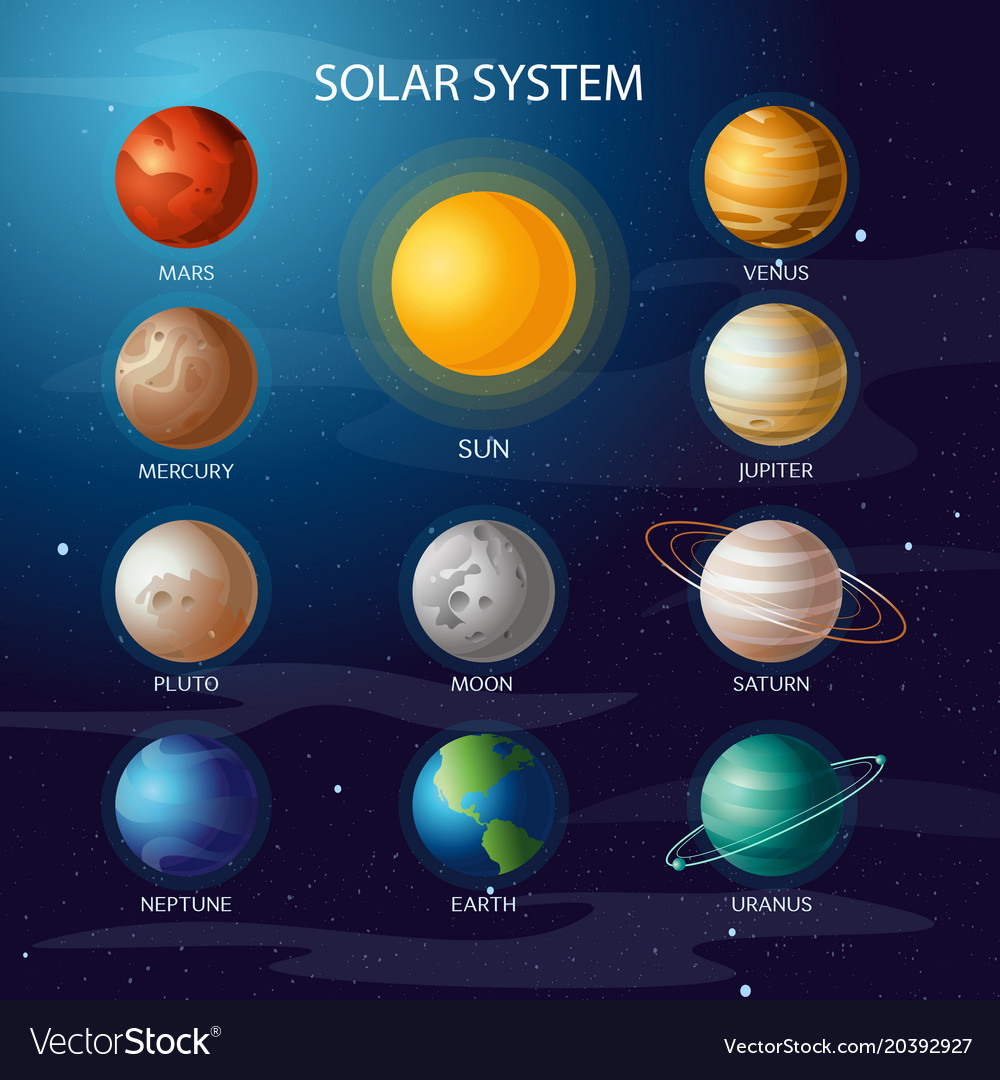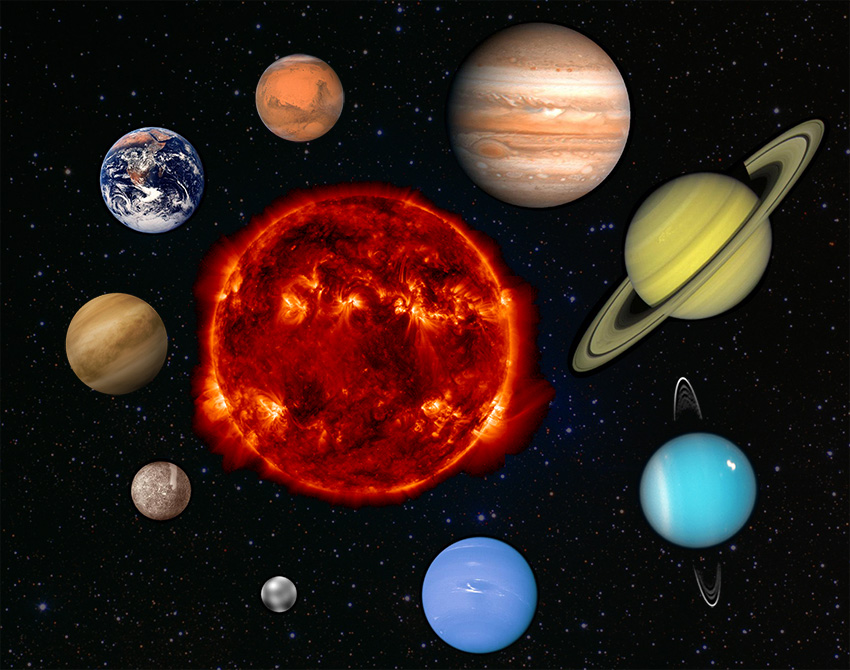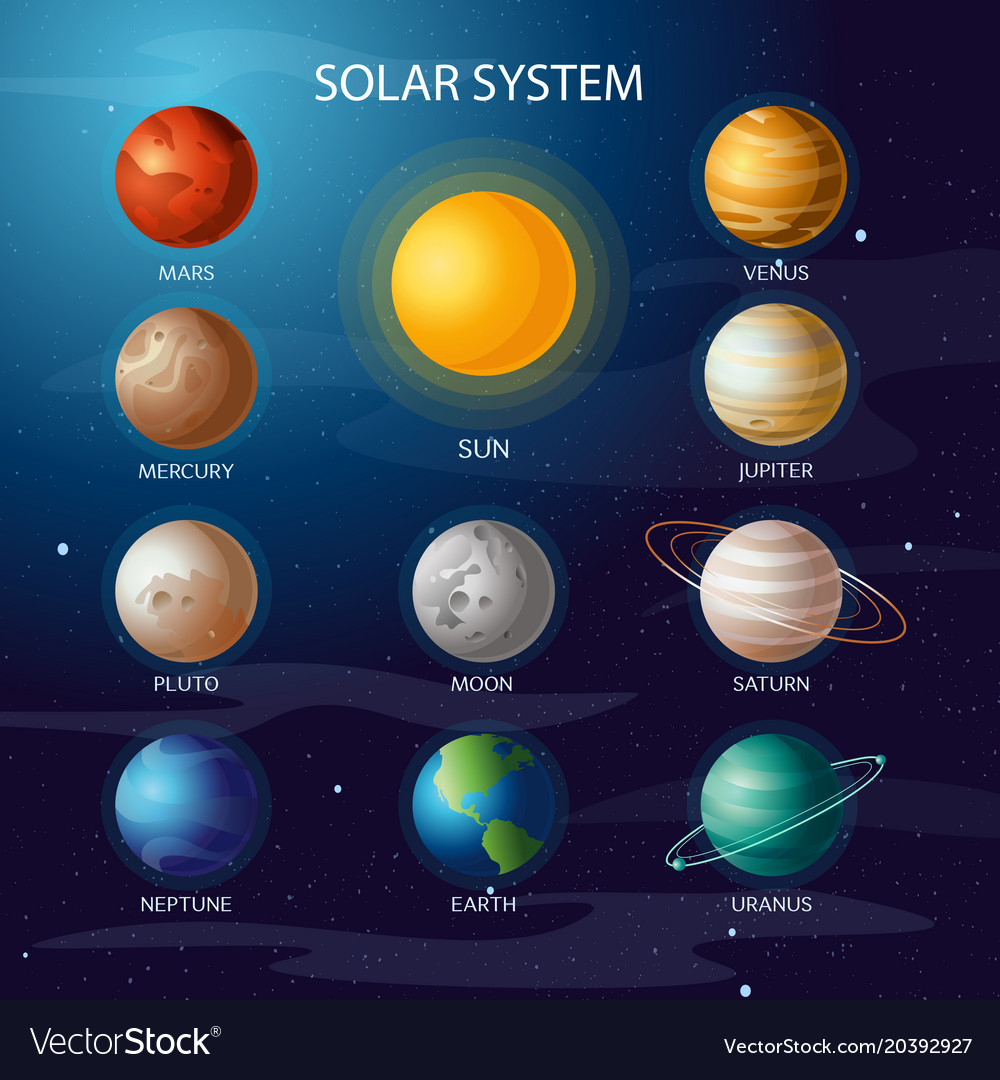Solar System Planets Colours And Size Studying the planets could even shed light on why many solar systems including our own lack a sub Neptune despite this type of planet being the most common type in the Milky Way
This graphic shows off the relative sizes of the major bodies in the solar system and the order of the planets It was originally intended truly show off the scale of the solar system however that would have meant were the distance from the Sun to Pluto 2 000 pixels the Sun would 5 pixels in diameter all the planets would have been invisible At the centre is the Sun Orbiting around the Sun are eight planets with over 100 moons between them at least five dwarf planets countless asteroids and the occasional comet In this Space guide
Solar System Planets Colours And Size
 Solar System Planets Colours And Size
Solar System Planets Colours And Size
https://cdn3.vectorstock.com/i/1000x1000/29/27/solar-system-all-planets-vector-20392927.jpg
Earth the largest of our solar system s four rocky planets has a diameter of about 7 900 miles 12 750 km Neptune the smallest of its four gas planets has a diameter of about 30 600 miles
Pre-crafted templates provide a time-saving service for creating a varied series of files and files. These pre-designed formats and designs can be utilized for various personal and professional projects, consisting of resumes, invitations, leaflets, newsletters, reports, discussions, and more, streamlining the content development process.
Solar System Planets Colours And Size

Image Result For Size And Color Of Planets 3d Solar System Solar

Planetas Solar System Projects Our Solar System Solar System Planets

OSSE Our Planet In The Solar System

Was Ist Die Farbe Der 8 Planeten Just for kids

File Telluric Planets Size Comparison jpg Wikimedia Commons

Solar System Diagram Learn The Planets In Our Solar System Solar

https://www.universetoday.com/36649/planets-in-order-of-size/
Jupiter 69 911 km 43 441 miles 1 120 the size of Earth Saturn 58 232 km 36 184 miles 945 the size of Earth Uranus 25 362 km 15 759 miles 400 the size of Earth

https://www.timeanddate.com/astronomy/planets/size
Sun Earth Sun Current Distance From Sun From Earth 147 484 Mil km Distance Brightness and Apparent Size of Planets See how far the planets are from the Sun or Earth how bright they look and their apparent size in the sky Moon Phase Chart Moon phases visualized in real time the past or the future The Sky Tonight

https://science.nasa.gov/resource/solar-system-sizes/
Resource Solar System Sizes Contents The Solar System Planet Sizes Downloads The Solar System Planet Sizes Mercury 1 516mi 2 440km radius about 1 3 the size of Earth Venus 3 760mi 6 052km radius only slightly smaller than Earth Earth 3 959mi 6 371km radius Mars 2 106mi 3 390km radius about half the size of Earth

https://science.nasa.gov/solar-system/planets/
Our solar system can be divided into three regions the inner solar system the outer solar system and the Kuiper Belt and Oort Cloud The inner rocky planets are Mercury Venus Earth and Mars These worlds also are known as terrestrial planets because they have solid surfaces

https://en.wikipedia.org/wiki/Solar_System
Formation and evolution Main article Formation and evolution of the Solar System The Solar System formed 4 568 billion years ago from the gravitational collapse of a region within a large molecular cloud e This initial cloud was likely several light years across and probably birthed several stars 9
Visible light Color of Planets Plot This plot compares the colors of solar system planets to the color of the hot Jupiter class planet HD 189733b With the exception of Mars the colors are primarily determined by the chemistry of the planets atmospheres Earth s blue atmosphere plus the blue tint of the oceans dominate our world s hue May 11 2016 by Matt Williams What Are The Colors of the Planets When we look at beautiful images of the planets of our Solar System it is important to note that we are looking at is not
The order of the planets in the solar system starting nearest the sun and working outward is the following Mercury Venus Earth Mars Jupiter Saturn Uranus Neptune and then the